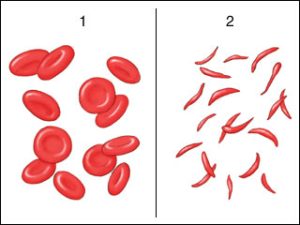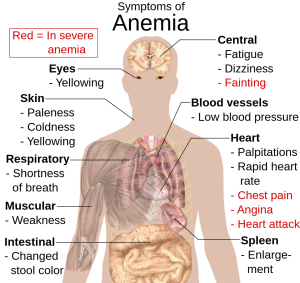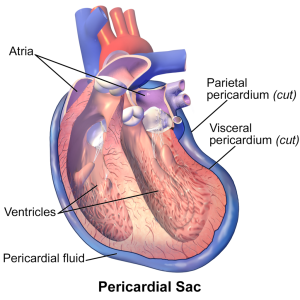1.6 Prefixes
A prefix is located at the beginning of a medical term and alters the meaning of the term. It is important to spell and pronounce prefixes correctly. When writing a prefix, if it is not in a medical term, you must place a “-” after the prefix. Not all medical terms have a prefix, but many do.
The following is a good technique to help you memorize prefixes:
- Start by reviewing the most common prefixes. We will look at more prefixes in Chapter 3.
- Compare the prefixes to the examples of use in medical terms in the tables below.
- Try to relate the prefixes below to common terms you hear in everyday life.
Table 1.11. Prefixes
| Prefixes | MEANING | EXAMPLE OF USE IN MEDICAL TERMS |
|---|---|---|
| a- , an- | no, not | anemia |
| aut- | self | autopsy |
| dia- | complete, through | diagnosis |
| dys- | bad, painful, difficult, abnormal | dyspnea |
| endo- | within | endoscope |
| exo- | outside | exocrine |
| hyper- | too much, excessive | hypertension |
| hypo- | too little, less than normal | hypotension |
| intra- | within | intravenous |
Key Concept
The following is a list of some common anemias:
Aplastic anemia: A condition in which the body does not produce enough red blood cells
Thalassemia: An inherited disorder in which the body does not produce enough hemoglobin
Sickle cell anemia: An inherited disorder where the red blood cells are crescent-shaped; Fig. 1.19 below shows the difference between healthy red blood cells and the crescent-shaped red blood cells that occur with sickle cell anemia
Vitamin deficiency anemia or pernicious anemia: A condition in which the body lacks vitamin B12, which is required to produce red blood cells
Iron deficiency anemia: A condition in which the body lacks iron, which is carried on the red blood cells and allows the red blood cells to carry oxygen
Hemolytic anemia: A condition that can either be inherited or develop later in life and is caused by the body destroying red blood cells faster than they can be produced
(Mayo Clinic, 2022)


Key Concept
Simply changing the prefix can change the meaning of a medical term entirely.
The prefixes hyper- and hypo- are used in many medical terms and usually mean the opposite of each other. See the examples below:
- hypertension (high blood pressure) and hypotension (low blood pressure)
- hyperthyroidism (condition of high thyroid) and hypothyroidism (condition of low thyroid)
- hyperglycemia (high blood sugar) and hypoglycemia (low blood sugar)
Table 1.12. Prefixes
| PREFIXES | MEANING | EXAMPLE OF USE IN MEDICAL TERMS |
| peri- | surrounding | pericardium |
| pro- | before, forward | prognosis |
| re- | back | resection |
| retro- | behind | retroperitoneal |
| sub- | below, under | subhepatic |
| trans- | across, through | transdermal |

Key Concept
The pericardium (Fig. 1.20) surrounds the heart. Its function is to protect, lubricate, and keep the heart in the correct position in the chest cavity (Healthline, 2022). The term can be broken down as follows: peri- (“surrounding”), cardi (“heart”), and -um (“structure”), which gives you “a structure surrounding the heart.”
Exercise
Exercise
Attribution
Unless otherwise indicated, material on this page has been adapted from the following resource:
Carter, K., & Rutherford, M. (2020). Building a medical terminology foundation. eCampusOntario. https://ecampusontario.pressbooks.pub/medicalterminology/ licensed under CC BY 4.0
References
Healthline. (2022). Pericardium. https://www.healthline.com/health/pericardium
Mayo Clinic. (2022). Anemia. https://www.mayoclinic.org/diseases-conditions/anemia/symptoms-causes/syc-20351360
Image Credits
(Images are listed in order of appearance)
Symptoms of anemia by Mikael Häggström, Public domain
Sickle cell anemia by Pkleong, Public domain
Blausen 0724 PericardialSac by Blausen Medical Communications, Inc., CC BY 3.0
The condition of no blood
To view self
A state of complete knowledge (this term is an exception to the rules; the suffix -sis means "state of")
Pain or difficulty breathing
A instrument used to visually examine within (the body)
To secrete outside; for example, exocrine glands
Pressure that is high; high blood pressure
Pressure that is low; low blood pressure
Pertaining to within a vein
A structure surrounding the heart
Knowledge before or making a prediction of the outcome
To cut back
Pertaining to behind the peritoneum
Pertaining to below the liver
Pertaining to across the skin

